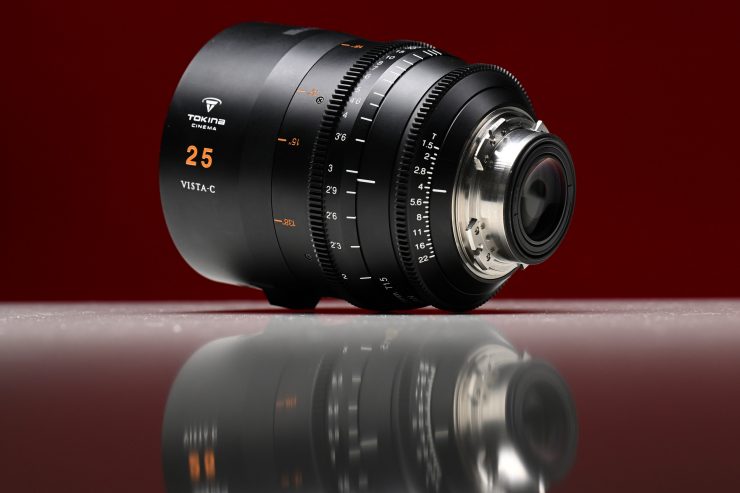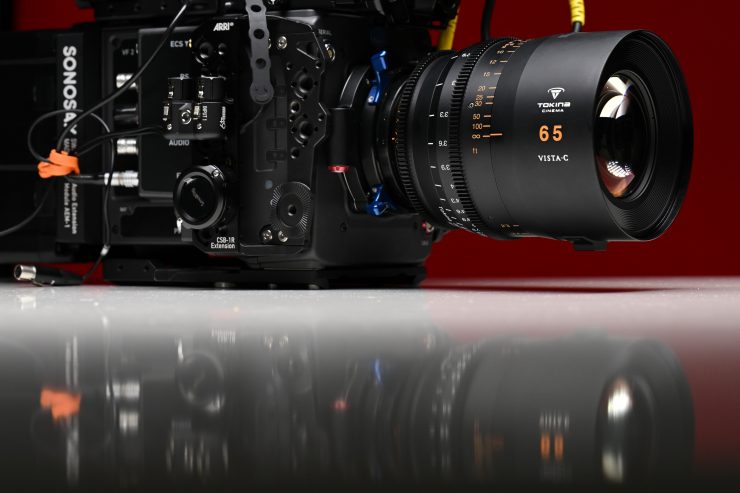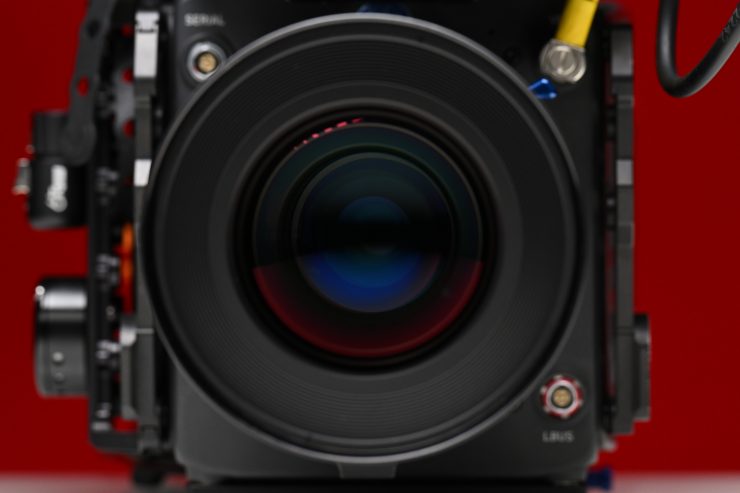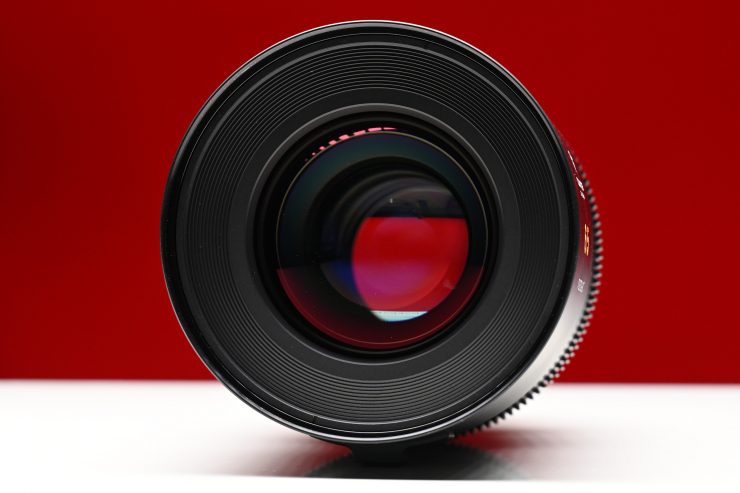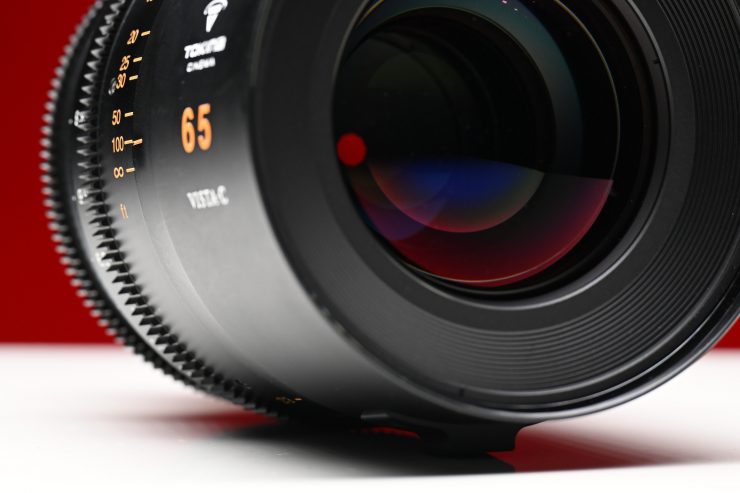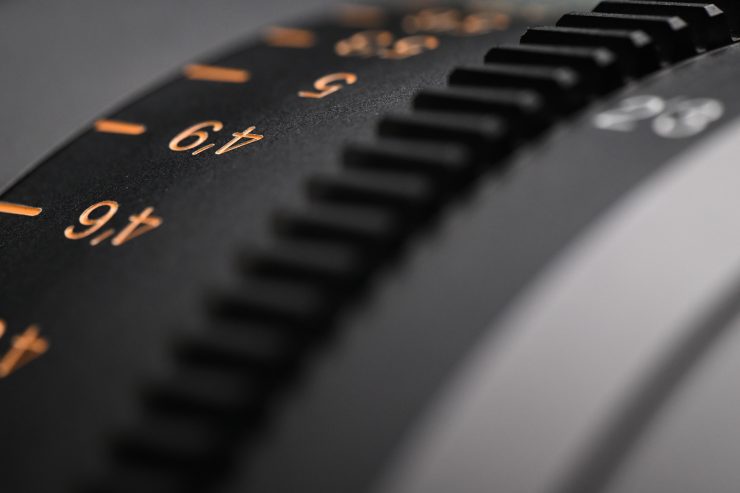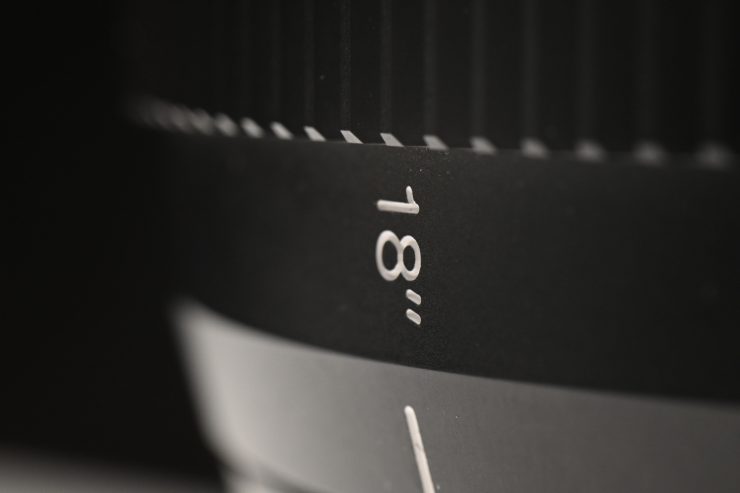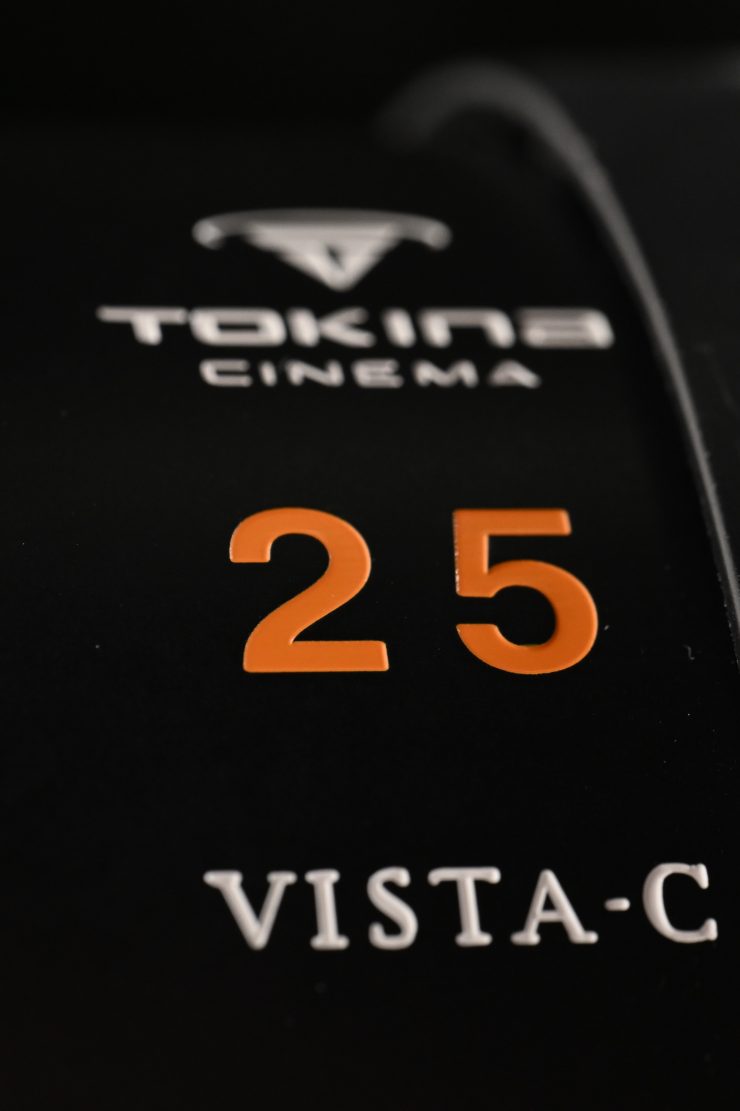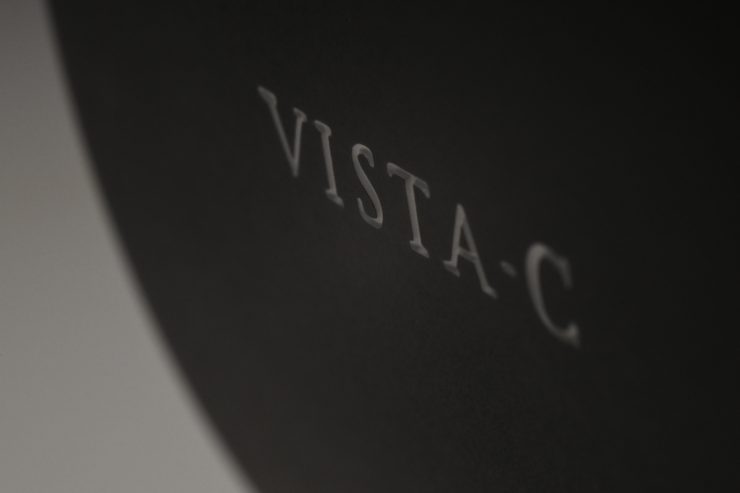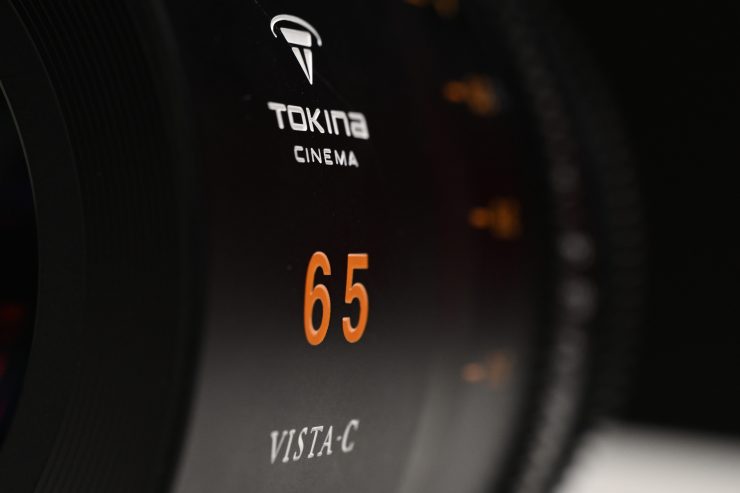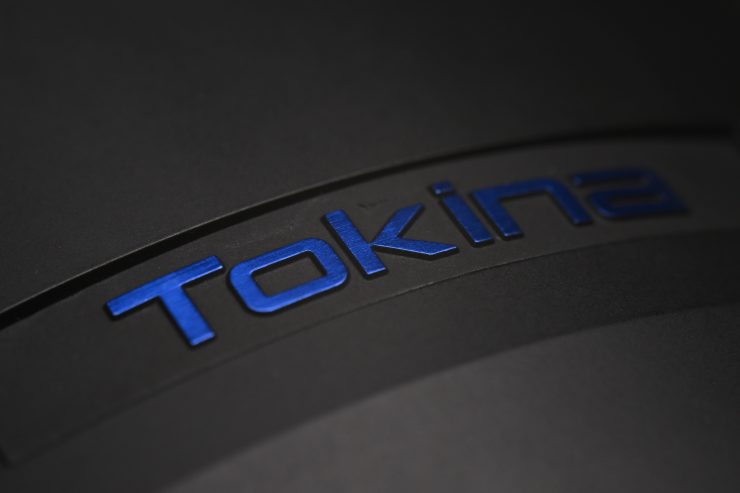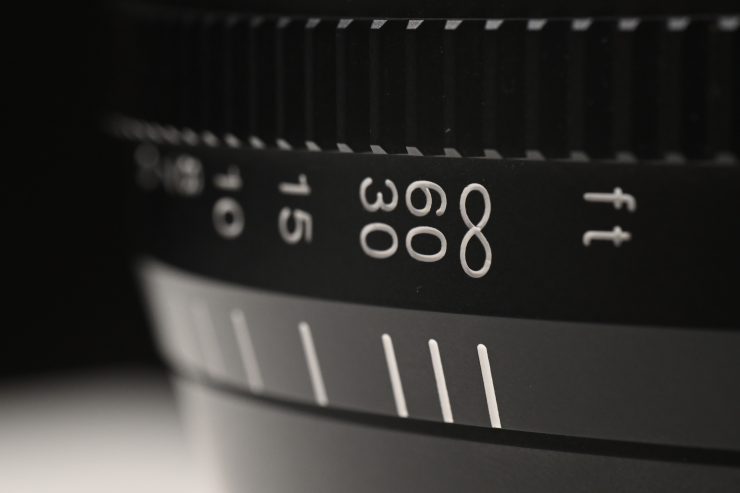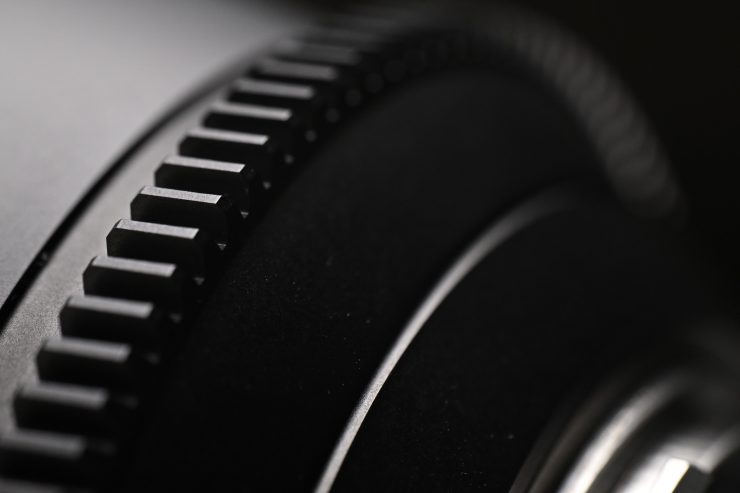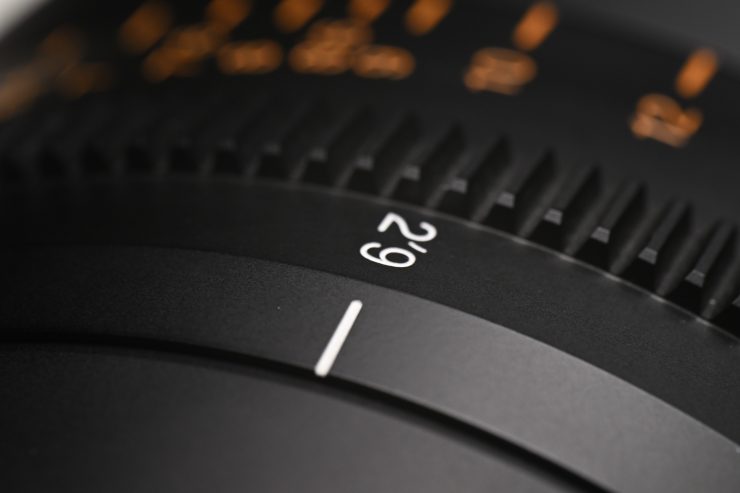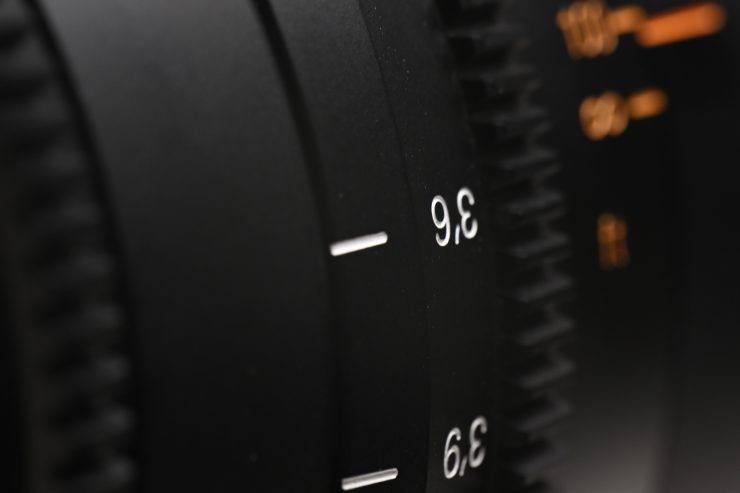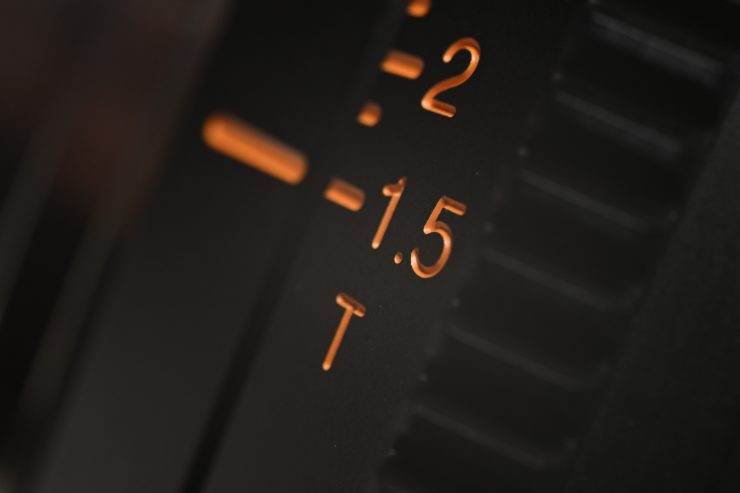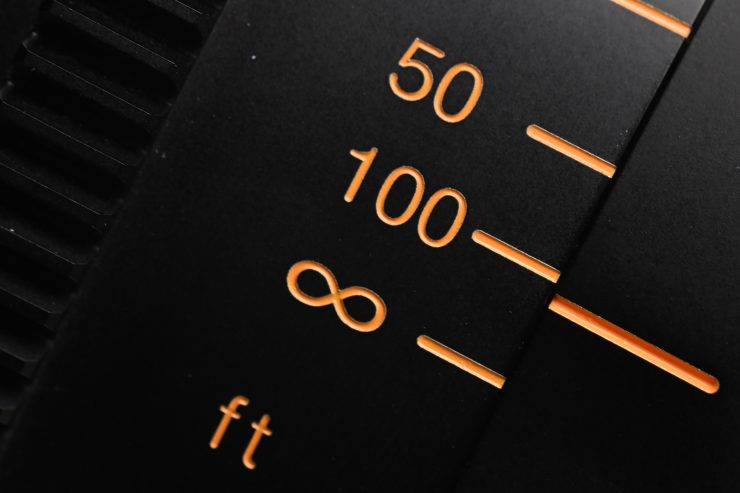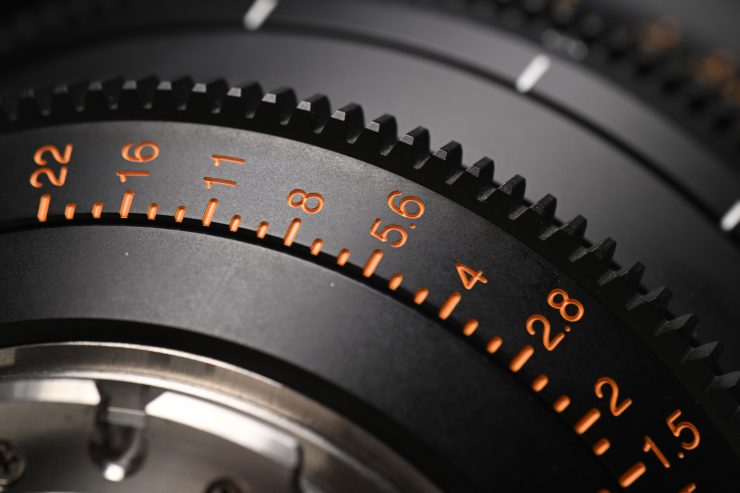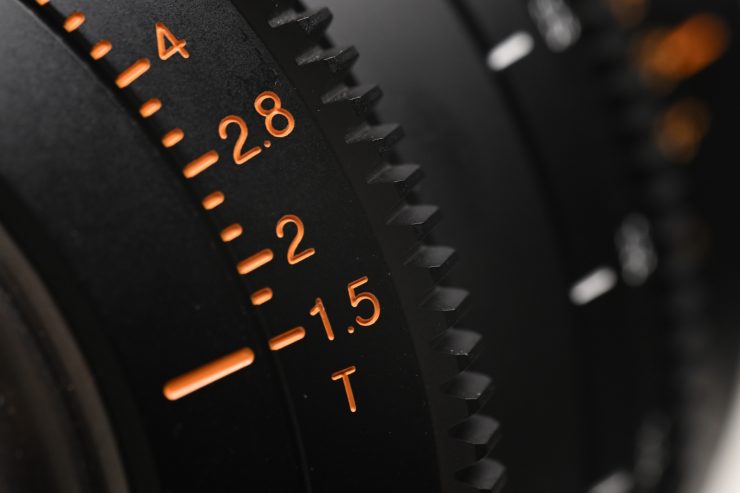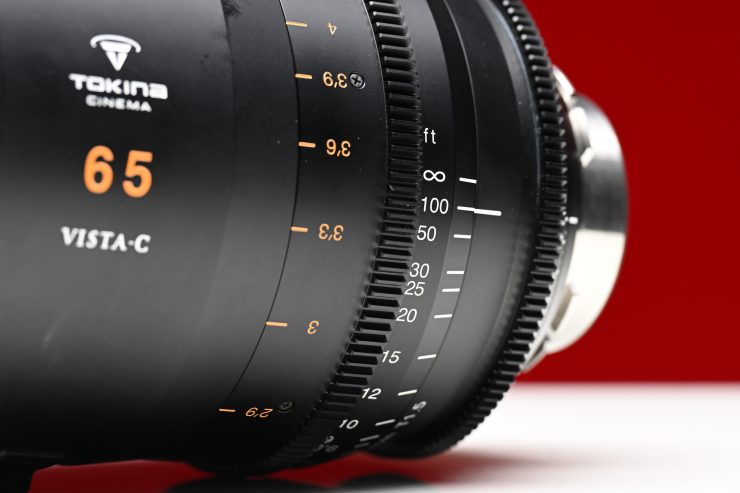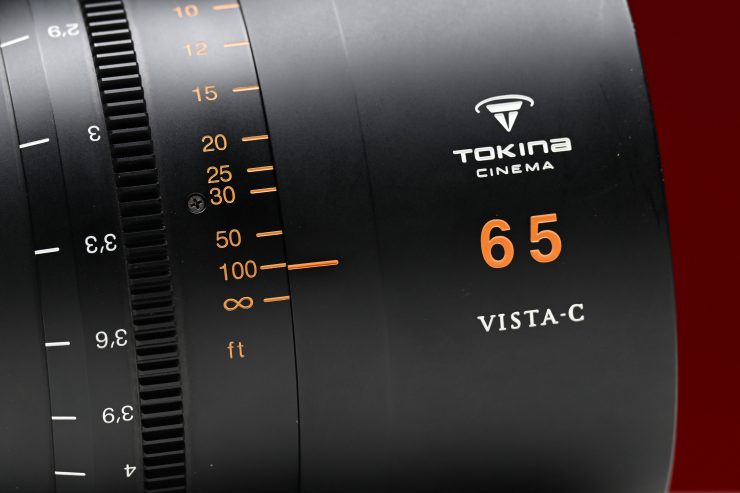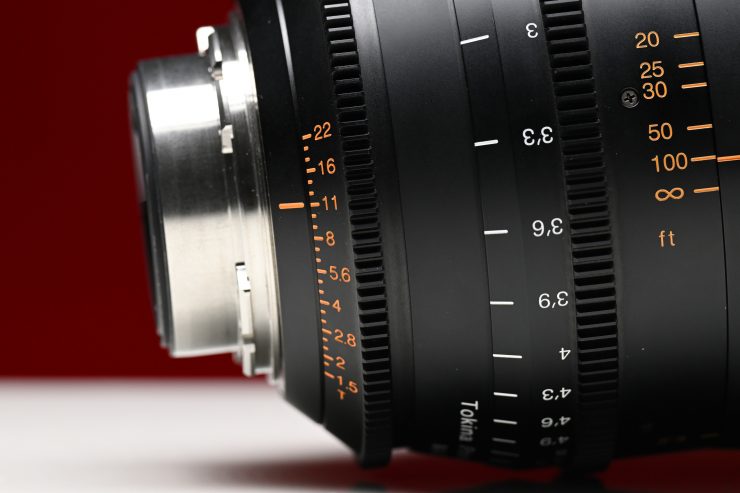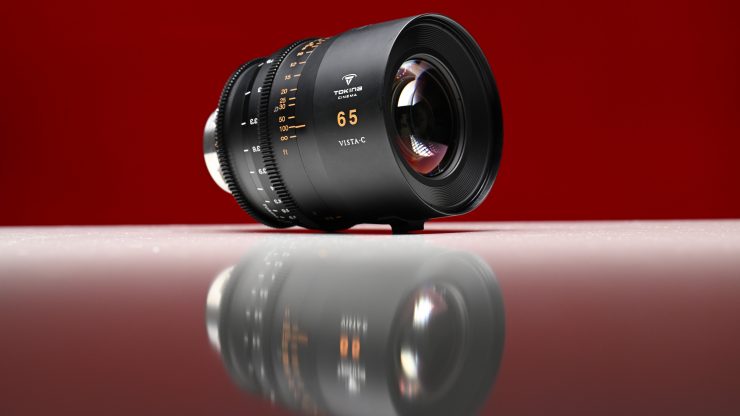
Tokina Cinema announced its new Vista-C cinema primes a few months ago. They were designed and built after close consultation with leading cinematographers and rental houses.
We have seen Tokina Cinema release the Vista One primes and the Vista-P series, but this new addition to the line-up features quite a different approach altogether. Unlike the Vista, Vista One, and Vista-P lenses, which utilize the same base optics, the Vista-C features completely new optics.
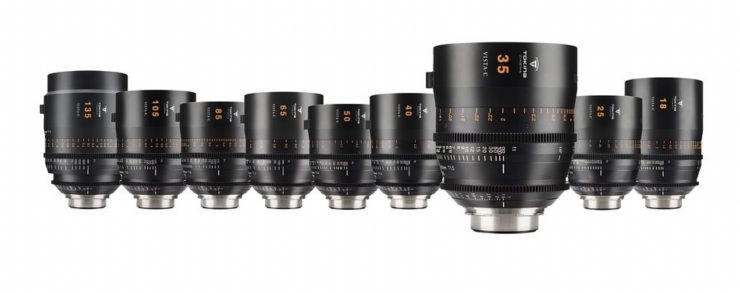
The Vista-C primes offer a unique vintage look with natural falloff, softer edges, blue and red flare tones, subtle distortion, and pleasing bokeh for full-frame plus sensors up to 65mm in a reliable modern design.
Above you can see the launch film for the Vista-P primes.
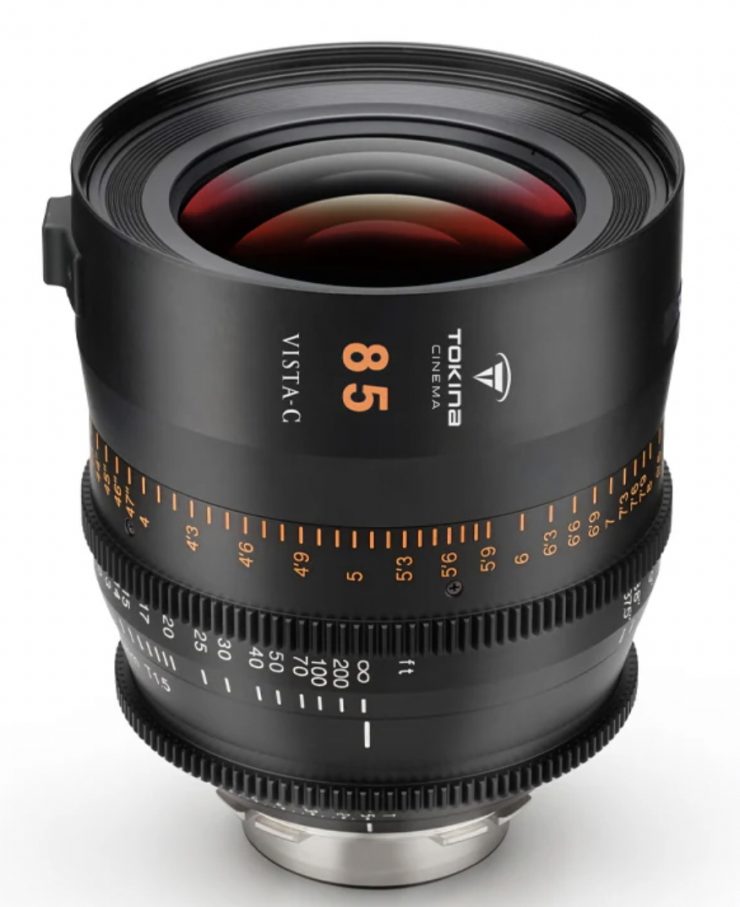
Key features
- Increased spherical distortion
- Reduced Contrast
- Super fast T1.5 Aperture
- Virtually no breathing
- A focus rotation angle of approximately 300 degrees
- Digital large format coverage
- High resolution – low distortion
- Low chromatic aberration
- Durable, all-metal cine-style housing with geared focus
- Smooth, 9-blade, curved iris
- 114mm front diameter, 112mm front filter thread
- Identical gear position on all focal lengths
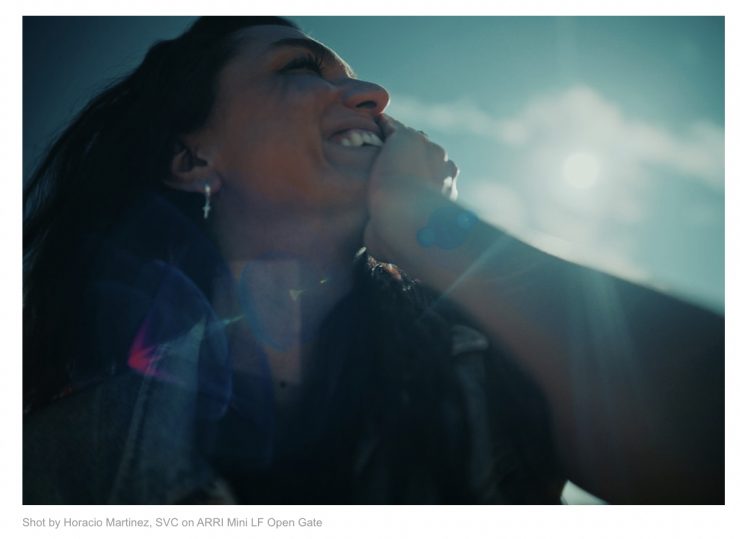
According to Tokina Cinema, the new lenses have a distinctive new look that blends the best of the past and the present, with many of the in-demand characteristics of the most popular vintage lenses such as red and blue accented flares, reduced contrast and subtle fall-off. The focus fall-off, minimal focus breathing, and red and blue flares offer the perfect blend of ‘vintage’ and ‘modern’ aesthetics. The Vista-C lenses are said to have similar characteristics to the Canon K35s.
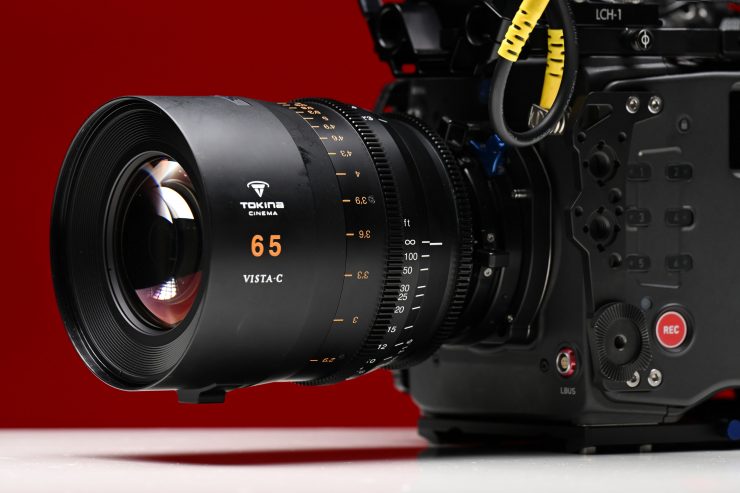
Although they look the same on the outside as the existing Vista and Vista-P series lenses, they have new elements, internal changes, and all-new coatings. According to Tokina Cinema, it has taken years of work to come up with the Vista-C lenses, as the elements needed to be changed or altered in each lens, and all-new coatings specifically developed. The change in optical design and flare coloring results in a look that is vastly different to the other Vista lenses as well as other popular cinema lenses on the market.
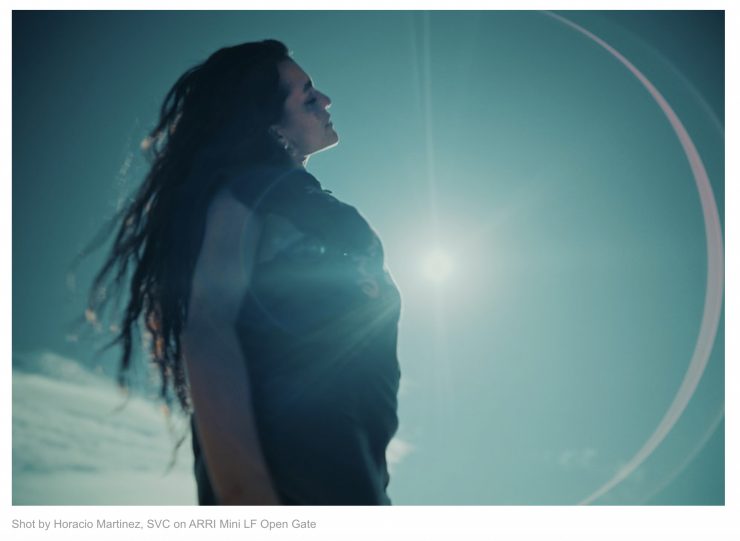
The new optical elements and coatings create a subtle field distortion instead of the stronger spherical distortion found in the Vista-P series, creating a desirable, unique aesthetic. This is all part of the intentional effort to capture a classic look characterized by softer edges, pleasant bokeh, and natural fall-off in the image. Because the elements and coatings are changed the Vista-C design goes far beyond the kind of modifications typically carried out by some rental houses and lens specialists when they attempt to ‘de-tune’ the image of the original Vista lenses.
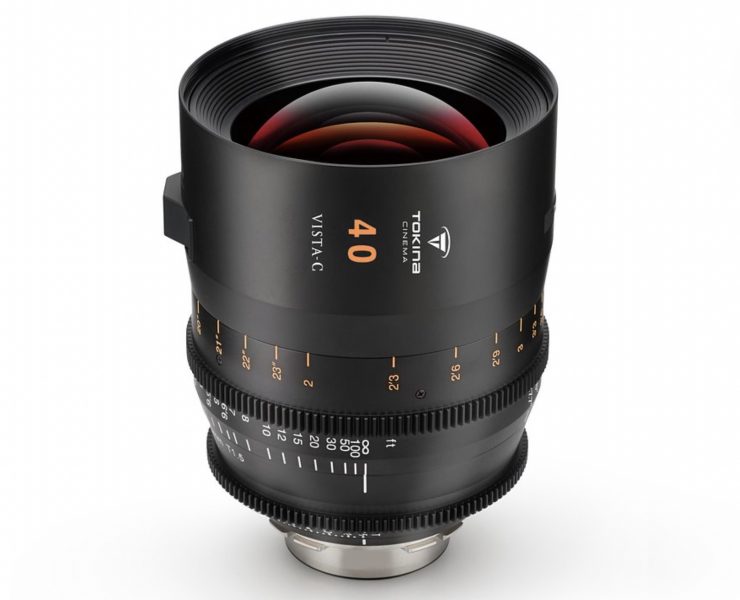
The Vista-C lenses feature a T1.5 aperture, high center resolution and virtually non-existent breathing of the existing Vista primes. The lenses have image coverage larger than Vista vision and every lens has an image circle with an area of definition in excess of 46.7mm which can easily cover all large format cinema cameras. The 35mm and longer lenses have an area of illumination that can be used on even larger formats including Alexa 65 Open Gate.
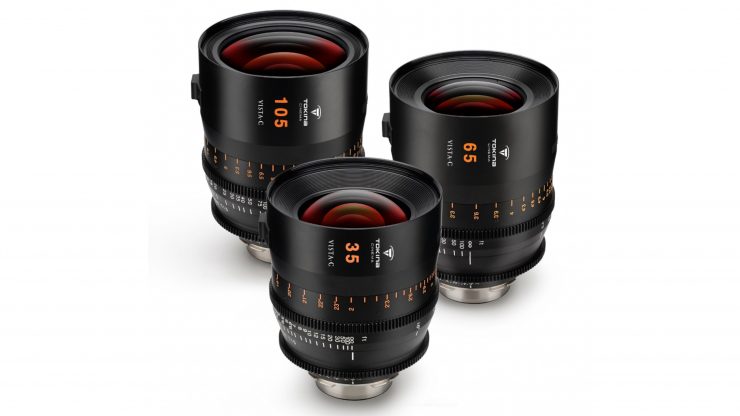
The lenses share the same 114mm front O.D. and nine-blade iris, and are available to order with PL, LPL, Sony E, EF, or MFT mounts.
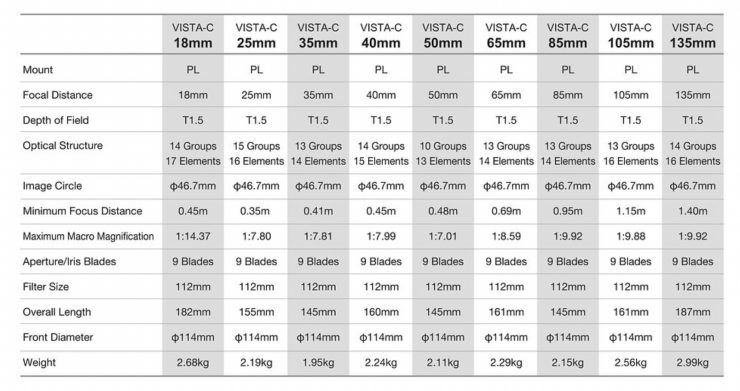
The Tokina Cinema Vista lenses have gained a lot of traction in the industry over the last few years. They are a very comprehensive range of fast primes that cover a 46.7mm image circle that allows them to be used on full frame and larger sensors. The full set consists of the 18, 21, 25, 29, 35, 40, 50, 65, 85, 105, 135mm, and 180mm to form a 12 lens set.
The lenses have been used in quite a few feature films and TV shows.
Focal Lengths Available
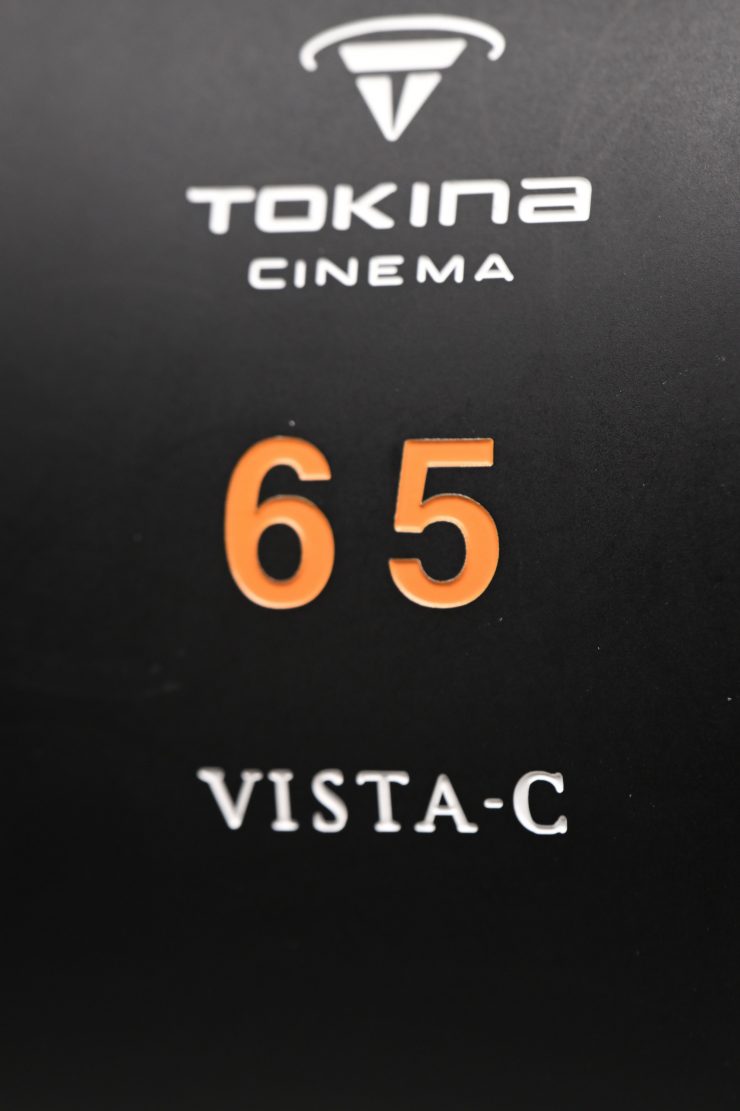
Unlike the standard Tokina Cinema Vista primes that consist of 12 focal lengths, the Vista-C is currently only available in the following focal lengths:
- 18mm T1.5
- 21mm T1.5
- 25mm T1.5
- 29mm T1.5
- 35mm T1.5
- 40mm T1.5
- 50mm T1.5
- 65mm T1.5
- 85mm T1.5
- 105mm T1.5
- 135mm T1.5
Optical Design
All of the lenses feature 9 aperture blades. The optical design is as follows:
- 18mm T1.5– 14 groups 17 elements
- 25mm T1.5– 15 groups 16 elements
- 35mm T1.5– 13 groups 14 elements
- 40mm T1.5– 14 groups 15 elements
- 50mm T1.5– 10 groups 13 elements
- 65mm T1.5– 13 groups 14 elements
- 85mm T1.5– 13 groups 14 elements
- 105mm T1.5– 13 groups 16 elements
- 135mm T1.5– 14 groups 16 elements
The minimum focus distance is as follows:
| MOD | |
| 18mm T1.5 | 45cm |
| 21mm T1.5 | NA |
| 25mm T1.5 | 35cm |
| 29mm T1.5 | NA |
| 35mm T1.5 | 41cm |
| 40mm T1.5 | 45cm |
| 50mm T1.5 | 48cm |
| 65mm T1.5 | 69cm |
| 85mm T1.5 | 95cm |
| 105mm T1.5 | 1.15m |
| 135mm T1.5 | 1.4m |

Images are fully resolved at 8K+ resolution and the lens covers both Vistavision and Super35 formats. Like all of the Tokina Cinema Vista series, they can cover a 46.7 mm image circle.
Size & Weight
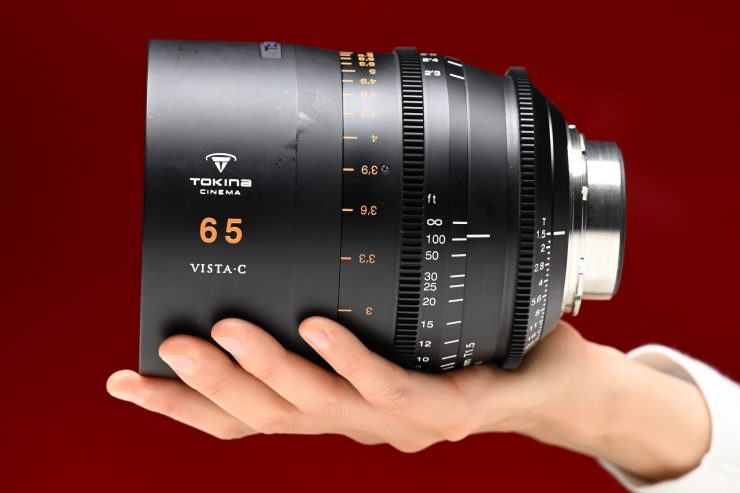
The Tokina Vista-C lenses are not lightweight options. Below are the weights for the various focal lengths:
| WEIGHT | |
| 18mm T1.5 | 2.68kg |
| 25mm T1.5 | 2.19kg |
| 35mm T1.5 | 1.95kg |
| 40mm T1.5 | 2.24kg |
| 50mm T1.5 | 2.11kg |
| 65mm T1.5 | 2.29kg |
| 85mm T1.5 | 2.15kg |
| 105mm T1.5 | 2.65kg |
| 135mm T1.5 | 2.99kg |
Built like a tank
Like all of the other Tokina Cinema Vista variants, the Vista-C series, as you would expect, is very solidly made. The outside of the lens casing is hard metal, and while it has been designed in a matte black finish to avoid light reflecting off it, it is susceptible to marks and scratches. Tokina Cinema recently announced a new customized color option for its Vista Prime lenses. Vista Custom as it is being referred to is a highly durable ceramic custom color treatment for any Vista Prime lens, whether new or previously purchased.
The iris and focus rings are beautifully weighted, and their operation is very smooth. The focus rotation is 300 degrees, which is great if you are using a follow focus, but if you are pulling focus by hand, you will find it difficult to go from the minimum focus to the maximum focus point.
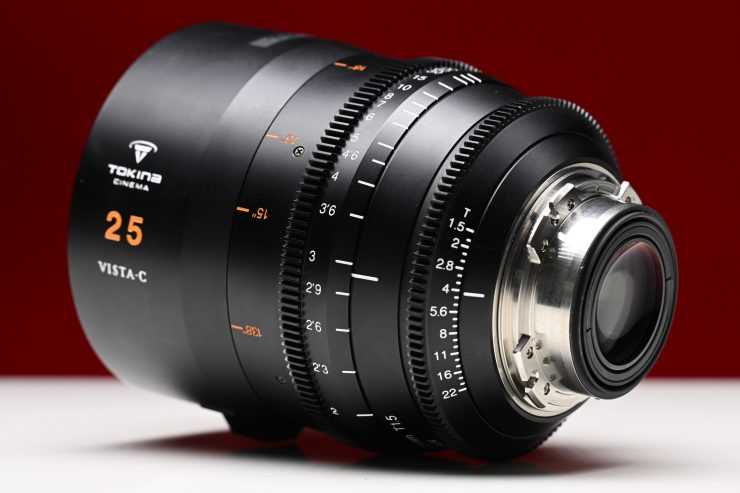
There is a built-in lens support adapter that takes a 1/4-20″ thread. Being as heavy as the lenses are, it’s probably a good idea to use a lens support.
Markings
The Vista-C lenses have clearly marked focus and iris scales on both sides of the lens. There certainly are a lot of markings, and some cinematographers or camera assistants may think there are too many. What I did discover from going into rental houses in Japan and talking to camera assistants and cinematographers who work here is that they actually like having lots of markings on lenses. As the lenses are made in Japan, this is probably why there are so many markings. I personally don’t mind having lots of markings, but it may not be to everyone’s taste.
The markings are easy to read and can be seen on both sides of the lens. On the operator’s side, they are white in color, and on the camera assistant’s side, they are a fluoro orange.
Available Mounts
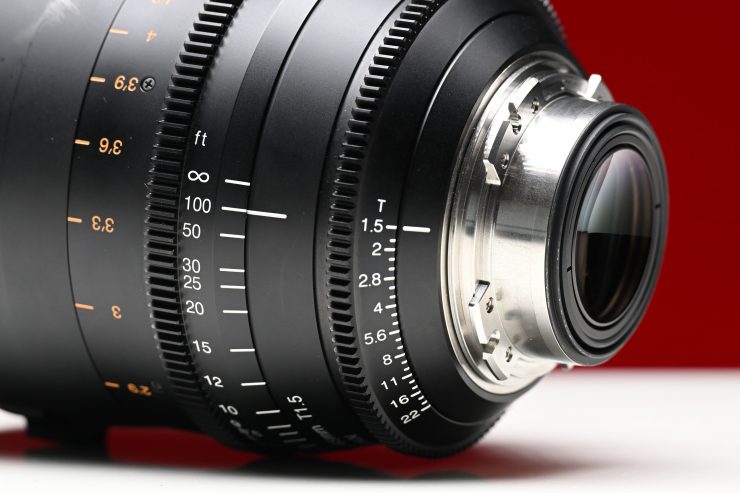
The Vista-P lenses are available in PL, Canon EF, M4/3, Sony E Mount, as well as ARRI LPL. The mount is changeable, but unfortunately, this is not something you can do yourself. I personally don’t like mounts that you can change yourself. If you don’t know what you are doing, you can easily make mistakes and affect the behavior of the lens if it isn’t done correctly.
Fall off and Vignetting
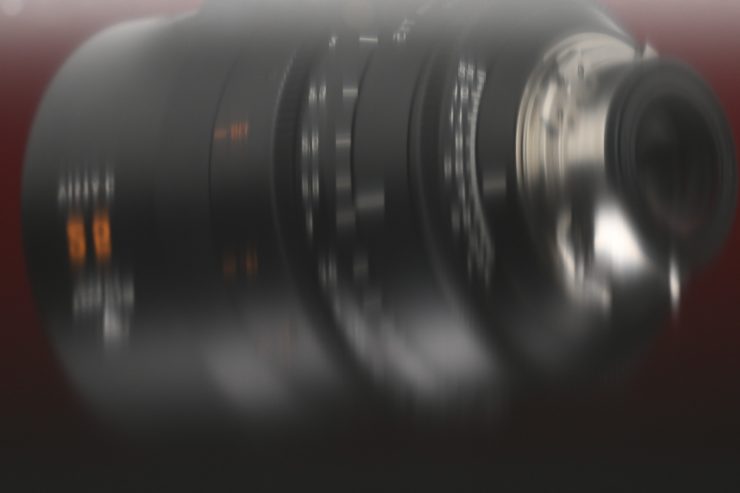
The lenses have a really nice fall off, and they throws a 54mm light circle so you get a nice amount of illumination across your image without any vignetting.
Sharpness
All of the previous Tokina Vista lenses that I have reviewed are very sharp, even when used wide open. Now, even though the Vista-C primes are said to offer a unique vintage look with natural falloff, and softer edges, they still have very good sharpness
Even when used wide open at T1.5, the Vista-C primes still offer impressive sharpness. The lenses are sharp, but without having that eye squinting sharpness that nobody really wants.
The edge sharpness on the 25mm T1.5, when used wide open is still good, and at T5.6 the edge sharpness is arguably almost as good as the center sharpness.
The 65mm T1.5 has very good sharpness across its T stop range and the edge sharpness is also impressive.
The lenses have a beautiful fall off and the out of focus areas have a nice softness to them.
Lens Breathing
I tested out the lenses by doing large focus throws, and to my eye, there is virtually no noticeable breathing. What you do see is some perspective shift, which is normal when refocusing a lens.
Image shift is the change in location of a fixed point after a focus rack. It should be in the same spot after you rack focus.
Perspective shift is the focal length of the lens being modified by the movement of the optics. A slight change in focal length may happen if there is a floating element that moves and is not properly corrected for in the design. Certainly, the great majority of lenses have this issue. It’s also tenths of a mm, so not overly noticeable.
Focus breathing is a change in image size, so the size of the object will get larger as it moves out of frame. That is reproduction size.
In summary, perspective shift is the effective focal length change (angle of view change) and focus shift is reproduction size of the object changing as focus moves. Think of it like Macro. A macro lens can be 1:1 life size reproduction, but as you focus, it can change the reproduction size. That is focus shift from intentional breathing design. The angle of view is not overly affected in that case because it is flat field focus. On spherical lenses, the angle of view does
Lens Flare
The Vista-C primes have by far the nicest flare of any of the Tokina Cinema lenses. The red and blue flares, at least in my opinion, provide a nice blend of ‘vintage’ and ‘modern’ aesthetics. The flares have a really nice softness and pleasing aesthetic.
The 25mm T1.5 produces gorgeous flares, and there is a nice amount of halation without it being over the top.
What is nice is that the lenses still retain a good amount of contrast even with direct light hitting the front of them. Tokina has done a really nice job of changing the look of the Vista lenses without going too far.
Chromatic Aberration
The lenses have very little real-world chromatic aberration. Even when used wide open at T1.5, I could see barely any chromatic aberration even when I punched into the image at 300%. Over-exposed metallic options showed no signs of color fringing. In contrast, I did find that the standard Tokina Vista’s did show slightly more signs of chromatic aberration, but this was only noticeable when looking at a 300% crop.
Bokeh
Nice bokeh is something you want if you are purchasing a fast lens. The bokeh produced by the Vista-C is very nice, and you can create some beautiful out-of-focus areas by using the lens wide open. There is a nice softness to the bokeh that is even there when stopping the lenses down.
Bokeh is a personal thing just like flare, and whether you like it or not will depend on your tastes.
Color Tone

The Tokina Cinema Vista-C, at least in my opinion, provides a really nice blend of character and optical performance. What you prefer from a lens is entirely going to come down to personal choice.
I found that the Vista-C and standard Vista primes can be used together without any problems.
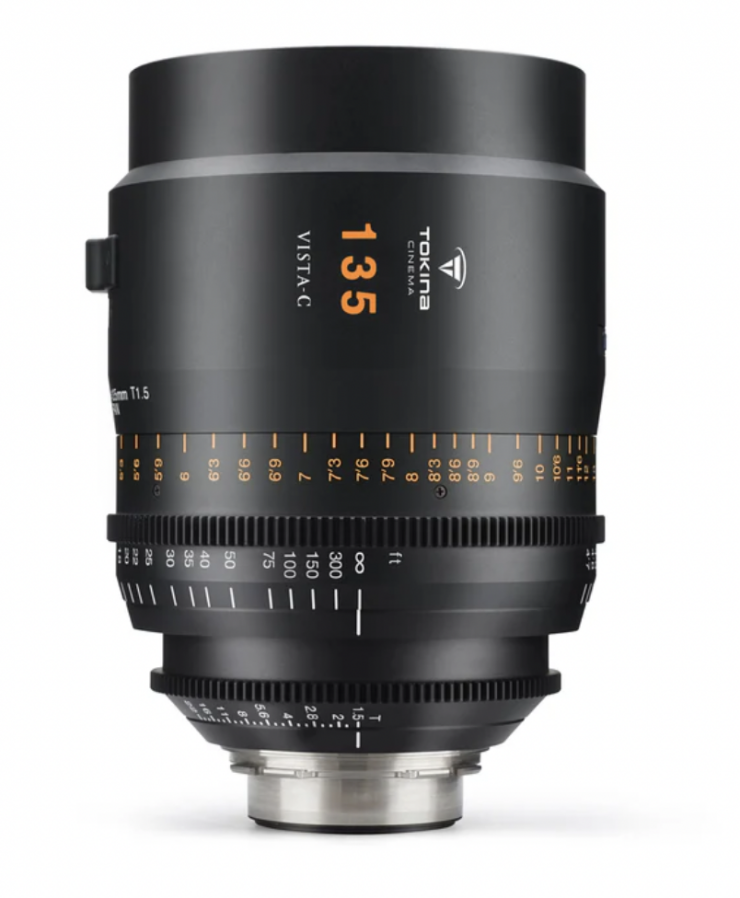
The color tone of a lens is something you should look at closely if you are going to be using both prime and zoom lenses from different manufacturers. Certain prime and zoom lenses work better together than others. What will work for you will also depend on what camera you are using.
Real World Thoughts

I liked using the Vista-C lenses and the results I could get from them. They are my favorite offerings from Tokina.
I went out and took some quick shots in natural lighting conditions using the 25mm T1.5 and the 65mm T1.5.

There is certainly no doubt about the optical performance of these lenses. They are very sharp even when used wide open, and they produce beautiful bokeh and a soft fall off.
Price & Availability
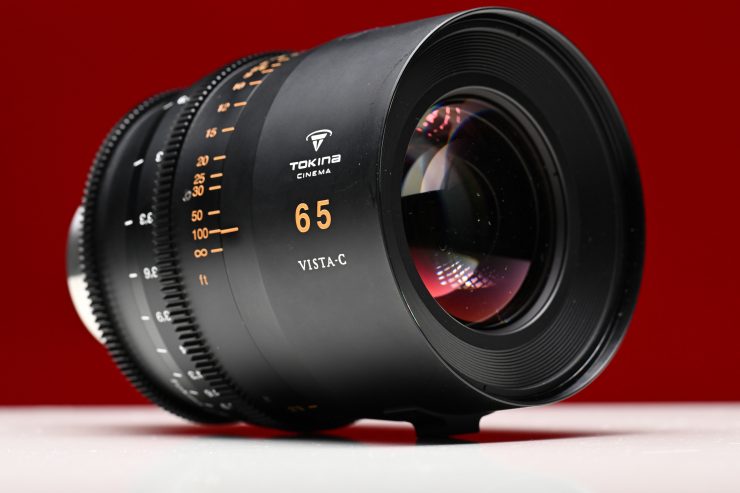
The series initially comprises nine lenses. Currently, they can only be purchased in a 9-lens set for $102,591 USD. On average, that works out to be around $11,399 USD per lens.
